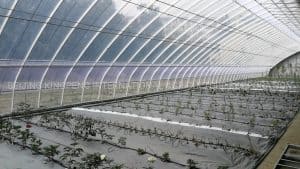Many greenhouse gardeners are discovering the benefits of growing their own produce. Since microgreens are becoming increasingly popular due to both their flavor and health benefits, it only makes sense to grow them in your own greenhouse.
Microgreens are a great crop to grow in any greenhouse due to their simplicity of care and space needed. Growing microgreens is possible in a small backyard greenhouse or a larger commercial operation.
What Are Microgreens?
If you have yet to discover the wonderful world of microgreens, you may be wondering what all the hype is about. Microgreens are not to be confused with sprouts, despite them both essentially being baby plants.
Sprouts are the name given to plants in the first stage of their life cycle. They are barely germinated seeds, around 2 to 5 days old, grown in water. Sprouts do not yet have real leaves and can be eaten in their entirety.
During the second life stage that these plants enter into, at around 10 to 14 days old, they are considered microgreens. At this stage, the plants have developed a few leaves, are approximately 4 to 5 inches long, and are typically grown in soil.
Unlike sprouts, which are eaten in their entirety, microgreens are harvested by cutting the plant off at about an inch above the roots.
What Are the Health Benefits of Microgreens?

The reason microgreens have become so popular is due to their incredible health benefits. Depending on the type of plant, microgreens can have up to 40 times more nutrition than an adult plant of the same species.
Simply put, microgreens are packed with nutrition since the vitamins, minerals, and antioxidants are present in higher concentrations at this stage.
What Kind of Greenhouse is Best for Microgreens?
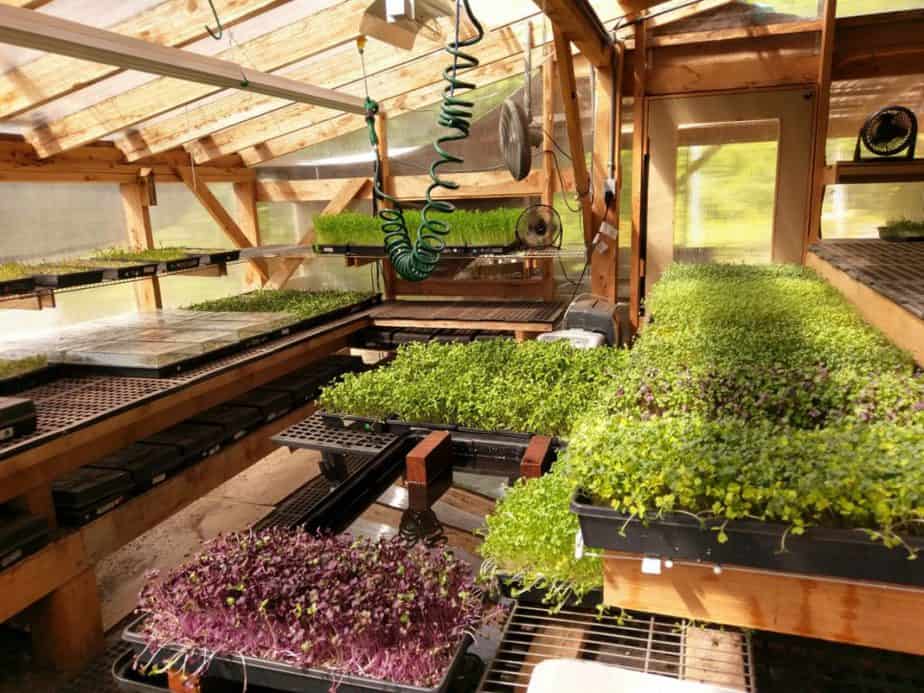
The type of greenhouse you need to grow microgreens will depend entirely on your climate and your goals for your harvest. If you simply want to extend your growing season and enjoy harvesting microgreens for yourself and your family, you don’t need anything beyond a simple setup.
Remember, microgreens cannot tolerate freezing temperatures, so it’s crucial to ensure that they stay relatively warm. An unheated greenhouse should be fine in locations where temperatures rarely dip below freezing.
However, if you’re interested in growing microgreens throughout the frigid winter or are interested in producing on a commercial level, you’ll need a consider a more complex growing system.
What Kind of Microgreens Are Best?
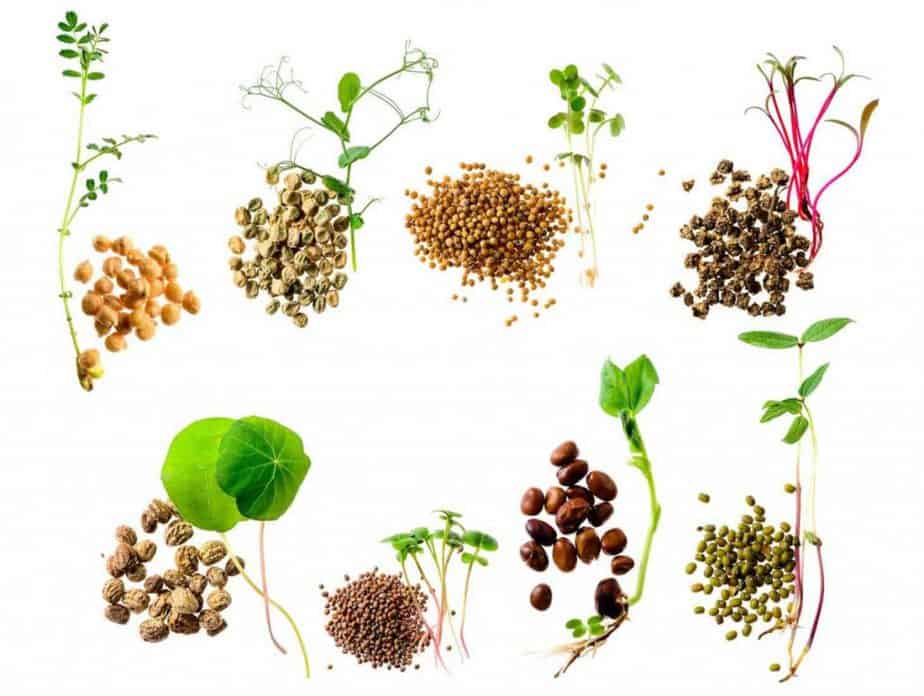
The type of microgreens you choose to grow in your greenhouse will depend on your preferences. Microgreens can vary in terms of taste, and some may be mild or even bland, while others can be more spicy, bitter, or sour.
Though this is certainly not a complete list of the microgreens you may choose to grow, these are some of the most popular:
Generally speaking, microgreens contain a more concentrated flavor of the adult plant, so you may want to choose crops that you’re already growing and enjoying.
Radishes, for example, tend to have a spicy flavor, while lettuce tends to be blander. Most gardeners recommend planting a variety to choose from, especially if you’re new to growing microgreens.
Nearly any crop can be grown as a microgreen, so if you have a favorite not mentioned here, you may want to consider planting extra to harvest as microgreens!
As with any plant, some will be easier to grow than others. Your green thumb and experience with raising certain crops may also be a factor to consider. You may also want to consider your chosen crop’s susceptibility to disease or pests.
If you live in a climate that can be harsh and do not have a heated greenhouse, you’ll also need to consider plants that are more tolerant of chilly temperatures.
Some plants also grow better in an aquaponics system and may not thrive the same way when grown in soil. Of course, you can always try growing your microgreens in an aquaponics system too.
As always, be sure to do your research and make sure the plants you’re growing are right for you, your greenhouse, and your plant hardiness zone.
Planting and Growing Microgreens
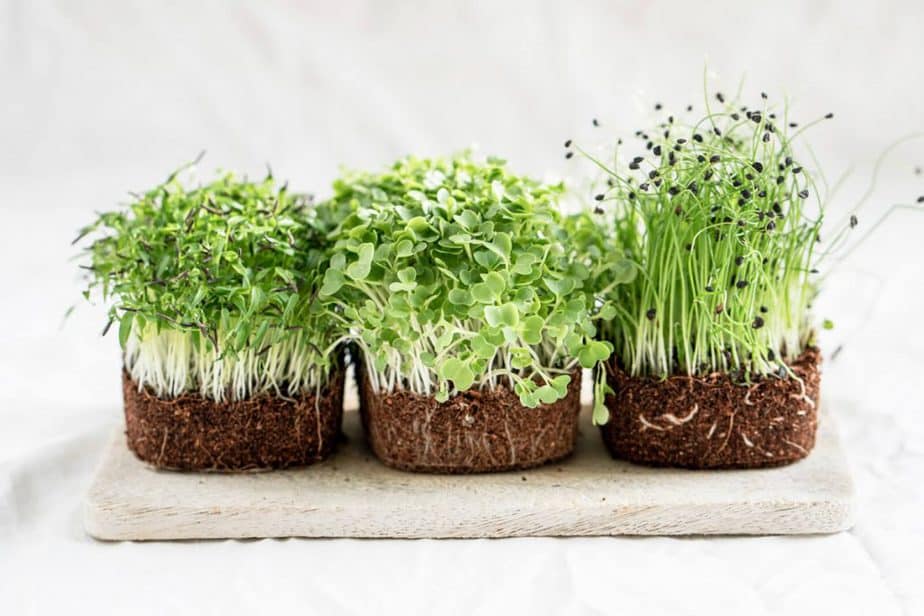
To get started, you’ll first need to purchase the seeds of your choice. These can be found at any local nursery or garden center or your favorite online retailer. If you’ve never started with a seed when growing before, then you should consult our guide on how to start seeds correctly. Microgreens should be planted on an even soil surface, but the soil should not be packed down.
Sprinkle the seeds across the surface of your soil and cover them with about 1/8 inch of soil. Moisten the soil but be careful not to overwater as it can wash the seeds away. Be sure there are no dry patches in the soil after watering.
You’ll need to keep the soil moist but not overly wet until the seeds germinate. Depending on your climate and greenhouse, this may be easy to accomplish. If you live in a dry climate, you may want to cover the seeds with a sheet of plastic to retain moisture.
However, you must be careful not to overwater your microgreens. Excess moisture and poor air circulation can lead to disease and pest infestation, so be sure that you water only when necessary, check your greenhouse’s ventilation, and adjust if necessary.
After a few days, you should see tiny plants begin to sprout on your soil’s surface. Those seedlings will grow fast, so get ready to harvest in the near future.
Remember, the plants are considered sprouts for the first few days and will not reach the nutrient content of microgreens until around 10 days. Depending on the species of plants you’re growing, you should harvest every 10 to 14 days.
If you plan on consistently growing microgreens in your greenhouse, you may be able to harvest as frequently as every two weeks, so it’s essential to plan your planting schedule accordingly.
This is especially true if you plan on producing microgreens commercially, as you’ll want to be able to maximize your yield and your profit.
Are Microgreens Worth It?
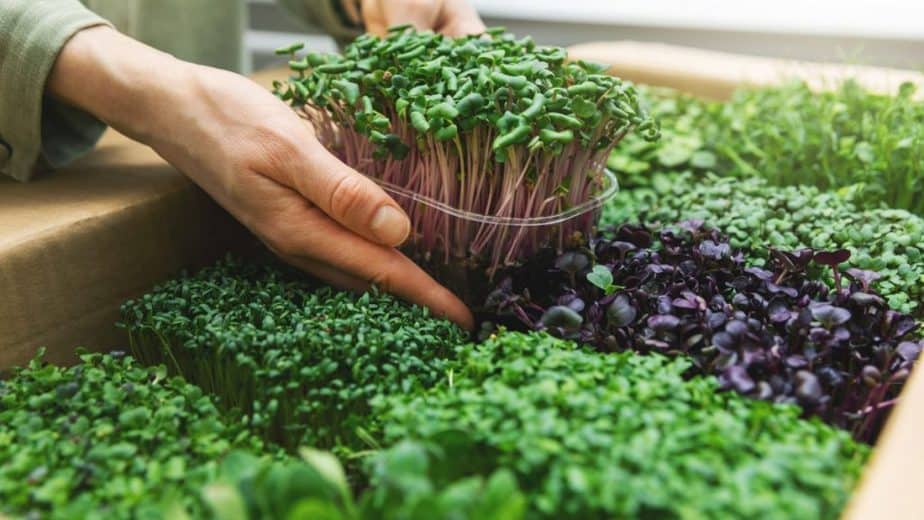
Yes, growing microgreens is definitely worth it. Whether from a health or fiscal perspective, microgreens are a great option to add to your growing repertoire. If you want to learn even more about growing microgreens in your greenhouse for either personal or commercial use, then read Microgreen Garden: Indoor Grower’s Guide to Gourmet Greens by Mark Mathew Braunstein!


